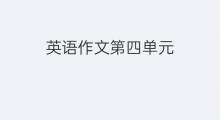关于”线状图“的英语作文范文3篇,作文题目:Line chart。以下是关于线状图的高二英语范文,每篇作文均为满分范文带翻译。
高分英语作文1:Line chart
模板:
The line chart shows the trend of (subject) from (start year) to (end year). As can be seen from the chart, there was a steady increase/decrease in (subject) from (start year) to (end year).
In (start year), (subject) was at (value) and it continued to increase/decrease until it reached its peak/lowest point in (year). After that, there was a (rise/fall) in (subject) until it stabilized at (value) in (end year).
Overall, the line chart indicates that (subject) experienced a (positive/negative) trend from (start year) to (end year).
范文:
The line chart shows the trend of global carbon dioxide emissions from 1990 to 2018. As can be seen from the chart, there was a steady increase in carbon dioxide emissions from 1990 to 2013.
In 1990, global carbon dioxide emissions were at 22.7 billion metric tons and it continued to increase until it reached its peak at 36.2 billion metric tons in 2013. After that, there was a gradual decrease in carbon dioxide emissions until it stabilized at around 34.3 billion metric tons in 2018.
Overall, the line chart indicates that global carbon dioxide emissions experienced a positive trend from 1990 to 2013, followed by a slight decline in recent years.
折线图英语作文翻译:
该折线图显示了从1990年到2018年全球二氧化碳排放的趋势。从图表可以看出,从1990年到2013年,二氧化碳排放量稳步增加。
1990年,全球二氧化碳排放量为22.7亿吨,之后持续增加,直到2013年达到了36.2亿吨的峰值。之后,二氧化碳排放量逐渐减少,直到2018年稳定在约34.3亿吨左右。
总体而言,该折线图表明,从1990年到2013年,全球二氧化碳排放量经历了积极的趋势,近年来略有下降。
万能作文模板2:折线图
Line Graph - An Effective Visual Tool for Data Analysis
折线图——数据分析的有效视觉工具
Data ysis plays a crucial role in various fields, including business, science, and social studies. Among the numerous tools available for data representation, line graphs have gained significant popularity due to their simplicity and effectiveness. In this article, we will discuss the significance of line graphs and how they aid in data interpretation.
数据分析在包括商务、科学和社会研究在内的各个领域中起着关键作用。在众多可用于数据表达的工具中,折线图由于其简单性和高效性而受到了重视。在本文中,我们将讨论折线图的意义以及它们如何帮助我们解读数据。
A line graph is a type of chart that displays data points connected by lines. It is particularly useful for showing trends and changes over time. The horizontal x-axis represents time or any other independent variable, while the vertical y-axis represents the dependent variable or the data being measured. By plotting data points and connecting them with lines, line graphs vividly ilrate the relationship between variables.
折线图是一种显示由线连接的数据点的图表。它特别适用于显示随时间的趋势和变化。水平的x轴代表时间或任何其他自变量,而垂直的y轴代表因变量或所测量的数据。通过绘制数据点并用线连接它们,折线图生动地说明了变量之间的关系。
Line graphs are widely used in business to track sales, market trends, and financial performance. For example, a line graph can plot monthly sales figures over a year, allowing business owners to identify peak periods and plan marketing strategies accordingly. In science, line graphs are employed to yze experiments and observe patterns. They help scientists visualize and interpret data effectively, enabling them to draw meaningful conclusions.
折线图在企业中被广泛用于跟踪销售、市场趋势和财务表现。例如,折线图可以绘制一年内的每月销售数字,让企业主能够确定高峰期,并相应地制定营销策略。在科学领域,折线图用于分析实验和观察模式。它们帮助科学家有效地可视化和解读数据,使他们能够得出有意义的结论。
Line graphs also assist in social studies, where data about population growth, unemployment rates, or crime rates are yzed. By plotting this data on a line graph, policymakers and researchers can identify patterns, forecast future trends, and make informed decisions. The simplicity of line graphs empowers non-experts to understand complex data sets without extensive statistical knowledge.
教育领域也经常使用折线图,帮助学生分析和解释数据,培养他们的数据分析能力。通过使用折线图,学生可以更好地理解趋势和模式,并对数据进行比较和推断。
In conclusion, line graphs are an indispensable tool for data representation and ysis. Their visual appeal and simplicity make them accessible to a wide range of individuals, from business owners to scientists and students. Line graphs provide an effective means of interpreting trends and patterns, aiding in better decision- and understanding of complex data. Therefore, it is essential for everyone to learn how to create and interpret line graphs to harness their full potential in various fields.
总之,折线图是数据表达和分析中不可或缺的工具。它们的视觉吸引力和简单性使其适用于各个领域的人群,包括企业主、科学家和学生。折线图提供了解释趋势和模式的有效手段,有助于更好地决策和理解复杂的数据。因此,每个人都有必要学习如何创建和解读折线图,以充分发挥其在各个领域的潜力。
满分英语范文3:线状图
Line Chart
折线图
A line chart is a visual representation of data that uses a series of connected data points to show the changes in a variable over time. It is one of the most commonly used types of charts to display and yze data trends.
折线图是一种用一系列相连的数据点来显示变量随时间变化的数据可视化表达。它是最常用的一种图表类型,用于显示和分析数据趋势。
In a line chart, the x-axis represents time or another independent variable, while the y-axis represents the dependent variable. Each data point is plotted on the chart, and lines are drawn to connect the data points, creating a line that shows the trend or pattern of the variable over time.
在折线图中,x轴代表时间或其他自变量,而y轴代表因变量。每个数据点都被绘制在图表上,然后通过连接数据点绘制出线条,这样就形成了一条显示变量随时间变化趋势或模式的线。
Line charts are useful for visualizing and understanding trends in data. They can show how a variable changes over time, identify patterns, and highlight any significant changes or outliers. Line charts are often used in various fields, such as economics, finance, and climate science, to yze and present data effectively.
折线图有助于可视化和理解数据中的趋势。它们可以显示变量随时间变化的情况,识别模式,并突出显示任何重大变化或异常值。折线图经常被应用于经济学、金融学和气候科学等领域,以有效地分析和呈现数据。
In conclusion, line charts are a powerful tool for yzing and visualizing data trends. They provide a clear and concise way to understand the changes and patterns in a variable over time, them a valuable tool in data ysis.
总之,折线图是分析和可视化数据趋势的强大工具。它们以清晰简明的方式展示变量随时间的变化和模式,使其成为数据分析中的重要工具。
本文来自投稿,不代表逐光英语立场,如若转载,请注明出处









评论列表(47条)